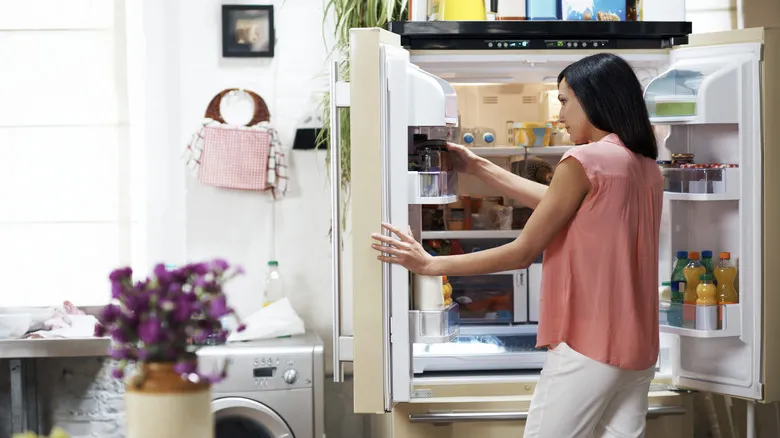Stashing food haphazardly on the fridge shelves
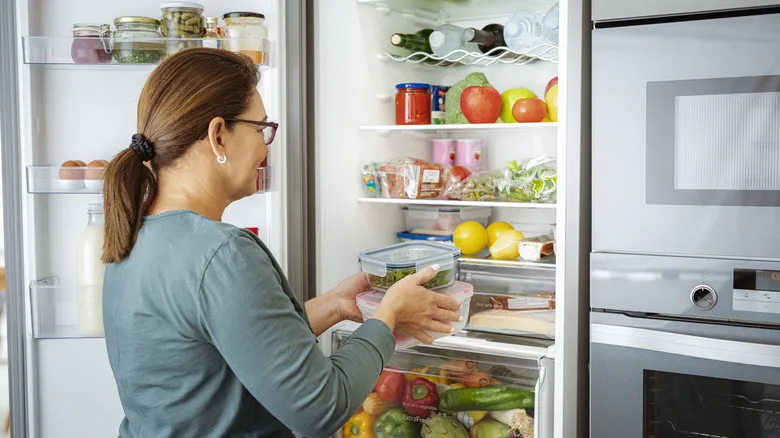
If you view your refrigerator simply as a source of coldness, you might be missing out on its full functionality. In reality, your fridge has varying degrees of cold, with the freezer being the coldest section. The door of your refrigerator is one of the warmest areas, making it a suitable spot for condiments like ketchup, mustard, and soy sauce. Items that spoil quickly should be placed in the center of the fridge, where they are less likely to be overlooked. If you're concerned about forgetting something, using a lazy Susan can help you organize your fridge, allowing you to easily see everything with a simple turn.
Meat and fish prefer the bottom shelf, but this can pose a problem. These items often release juices that can spoil the fruits and vegetables in your crisper unless precautions are taken. The best solution is to store them in lidded containers, so any leaks are contained and won't affect your fresh produce.
Speaking of the crisper, its name reflects its purpose. It's designed to keep your fruits and vegetables fresh and crisp until you're ready to enjoy them, so make sure to utilize that space effectively.
Storing condiments in the fridge
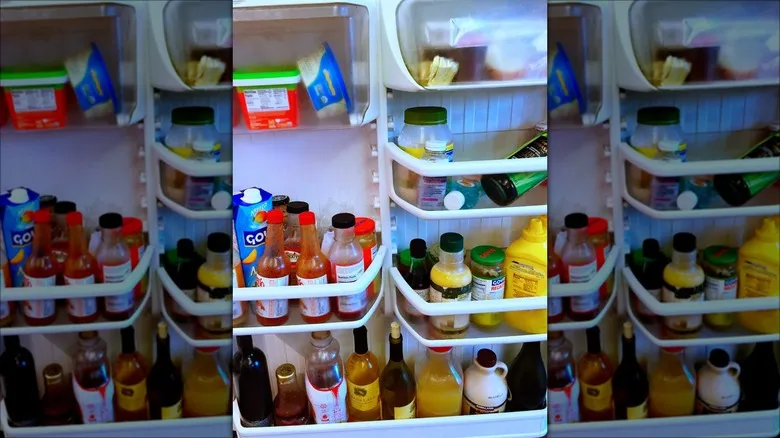
Here’s a little-known fact about condiments that’s right in front of us. Many of them are crafted from ingredients that naturally preserve food—think vinegar, sugar, and salt. Others undergo fermentation, like Worcestershire sauce and soy sauce. This means you don’t necessarily have to store them in the refrigerator after opening; they can stay fresh even when kept in the cupboard.
If you often find your fridge cramped, making this simple change could free up some space in the refrigerator door, where most people keep their condiments. This newfound space can be used for other items, such as jellies, jams, and cold beverages.
Some culinary enthusiasts even suggest placing fresh vegetables in the door and moving condiments to the crisper. The reasoning is that vegetables often get forgotten in the crisper, leading to spoiled produce. By swapping these items, you reduce the chances of your vegetables going bad before you have a chance to enjoy them. If you’re hesitant about storing your condiments in the pantry but want to optimize your fridge space, this could be a practical solution.
Leaving food in the can it came in
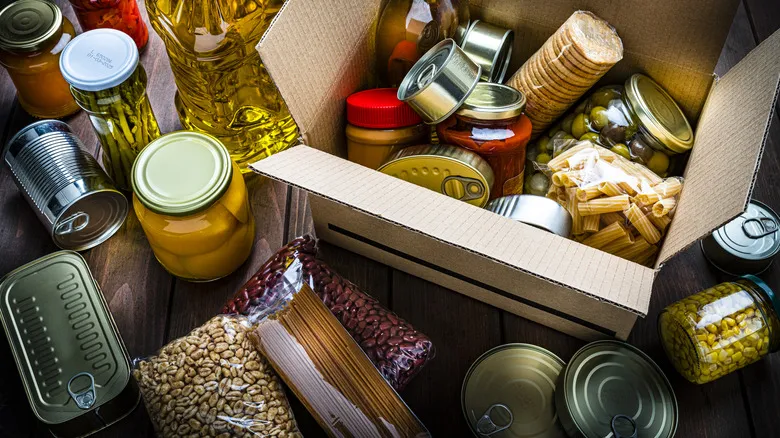
Most people have likely encountered the advice against storing food in its original can in the refrigerator. There are several reasons for this caution. Some individuals are concerned about the potential for metal to leach into acidic foods, such as tomatoes, or for Bisphenol-A (BPA) to contaminate the food.
In the case of metal corrosion, while it is a valid concern, it would take many years for the right conditions to lead to any significant risk. As for BPA, current research is inconclusive. The Food and Drug Administration (FDA) is actively monitoring the situation, but as of now, the levels found in packaging are not considered harmful.
So, if these worries are more myth than reality, why the emphasis on not refrigerating food in its can? The answer lies in the preferences of food enthusiasts. Transferring food to a covered glass container enhances its flavor when you're ready to eat. By storing it this way, you can expect it to remain good for three to four days in the fridge before needing to be discarded. The lid helps prevent the food from drying out, ensuring it tastes as fresh as possible when it's time to cook.
Putting onions in the fridge

Curious about the fastest way to turn your onions into a soggy mess? Here’s a tip: keep them in the fridge. If this has been your go-to method, you’ve been improperly storing your onions your entire life.
The science behind this is quite interesting. The cold temperatures of the fridge act like a factory, converting the starches in the onion into sugars, which results in a mushy texture. Onions prefer a slightly cool environment with some dry air, ideally stored in a mesh bag. If you have a spot like that in your pantry, it will be a cozy retreat for your onions, allowing them to rest until they’re ready to become your delicious onion rings.
Once you slice an onion, it’s perfectly fine to refrigerate the leftover pieces until you’re ready to use them. Placing them in a sealable bag or an airtight container is the best way to keep them fresh until you need them.
Hanging on to leftovers past their expiration date
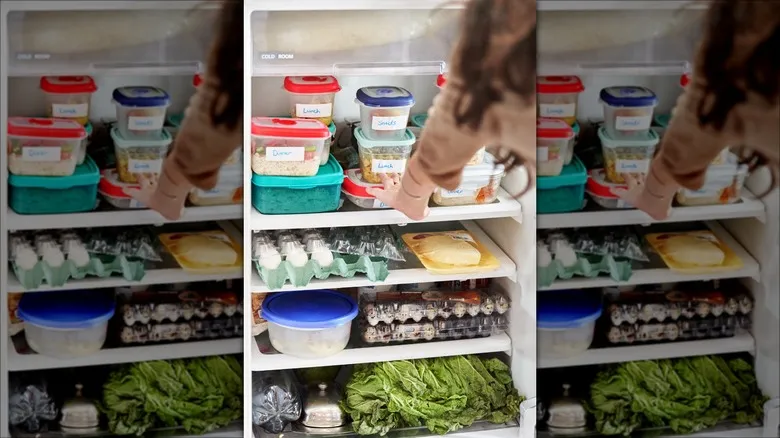
If you tend to treat everything valuable as if it's irreplaceable, you might want to reconsider this approach when it comes to your leftovers. In this instance, it's wise to take action—enjoy that leftover roast chicken before the fourth day rolls around. Essentially, your leftovers will remain safe in the refrigerator for less than a week, after which it's time to discard them. Keeping them beyond that point invites harmful bacteria, molds, or fungi that can spoil your food and potentially make you ill.
Ideally, those leftovers should be placed in the fridge within two hours of cooking. Delaying this can put you in the "danger zone," where food temperatures range from 40°F to 140°F. At these temperatures, your glass cookware can turn into a breeding ground for science experiments that may smell delightful but can lead to serious illness.
If you know you won't be able to consume the leftovers within three or four days, consider transferring them to the freezer, where they can last for several months. However, not all foods freeze well. If your food appears worse after freezing, it’s likely that something went wrong in the freezing process.
Chilling out tomatoes and cucumbers
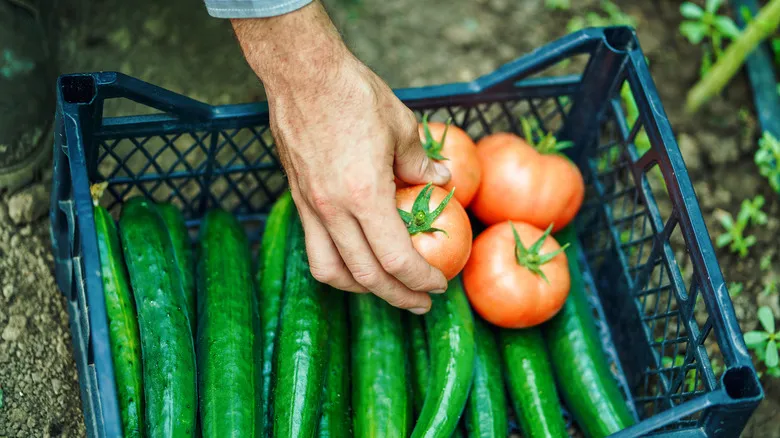
Tomatoes and cucumbers are a classic duo in the world of salads, and ideally, cucumbers should be crisp while tomatoes are juicy and hearty. To achieve this, proper storage is key. For cucumbers, the goal is to prevent them from sweating. When cucumbers sweat in the refrigerator, they become mushy. They thrive in the warmer areas of the fridge, such as the door. Unlike many fruits and vegetables that should not be washed before refrigeration, cucumbers should be rinsed lightly. After rinsing, wrap them in a paper towel to absorb any moisture, and then place them in a plastic bag or a sealable container with a lid.
Tomatoes need a bit of care to remain fresh. Unripe tomatoes can sit on the counter for a few days. After that, you’ll need to decide whether to refrigerate them. There are differing opinions on this: some argue that refrigerating tomatoes makes them mealy, while others believe it’s fine to refrigerate them once they’re ripe. Ultimately, it may come down to personal preference. If you enjoy chilled tomatoes, find a spot for them in the fridge; if not, feel free to leave them out.
Washing fruits and veggies before refrigerating
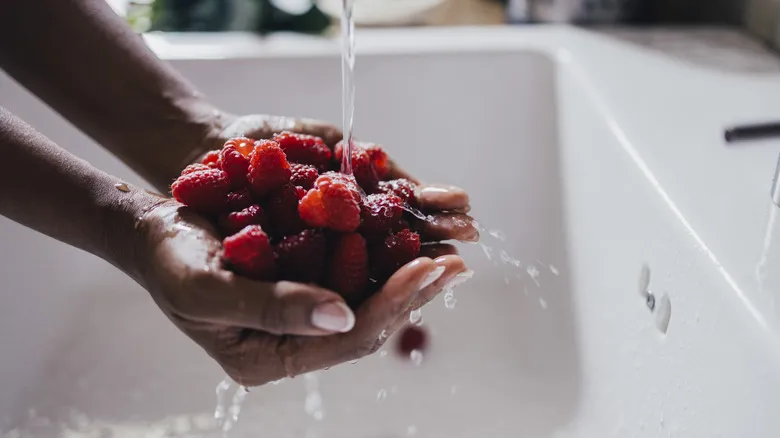
It's completely understandable to want to rinse your fruits and vegetables to remove any dirt, grime, or pesticides before consuming them. This instinct is not misplaced. However, the timing of when you wash your produce may not be ideal. Excess moisture from washing can lead to quicker spoilage, as dampness accelerates the rotting process.
For this reason, it's best to wash your fruits and vegetables just before you intend to eat them—ideally, within a few minutes to an hour prior.
If you feel uncomfortable placing unwashed produce in the fridge, there are a few alternatives you can consider. For instance, after washing delicate fruits like berries, you can place them in a paper-towel-lined salad spinner and spin them until all excess moisture is removed. The drier you can get the freshly washed produce, the better, as you want to avoid any water droplets on them.
Another method is to use a vinegar solution. Mix one cup of vinegar with three cups of water to wash delicate fruits like berries, then transfer them to the salad spinner lined with a paper towel to dry. You can then store them in the fridge as usual.
Using the door for egg storage
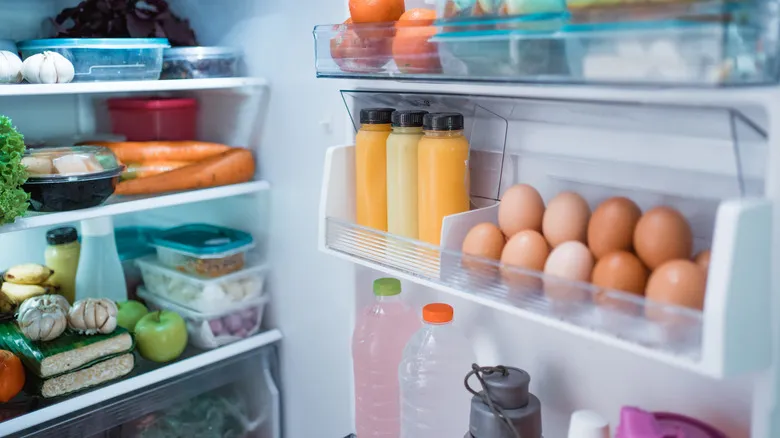
In relative terms, the fridge door is one of the warmest areas in your refrigerator. This means that items like eggs, which need a cooler environment, may not receive the necessary chill to stay fresh. The frequent opening and closing of the fridge prevents eggs—and anything else stored in the door—from staying consistently cold.
To give your eggs the best chance of staying fresh, place them in the back of the main compartment in their original container. A temperature of 40°F is ideal for maintaining their quality. Additionally, it's not advisable to keep cracked eggshells in their original carton. After washing during production, the eggs lose their protective coating, making them susceptible to bacteria and other contaminants, including unpleasant odors from the cracked shells and the fridge itself. Lastly, store the eggs with the narrow end facing down; this helps them stay fresh for a longer period.
Ignoring meat storage best practices
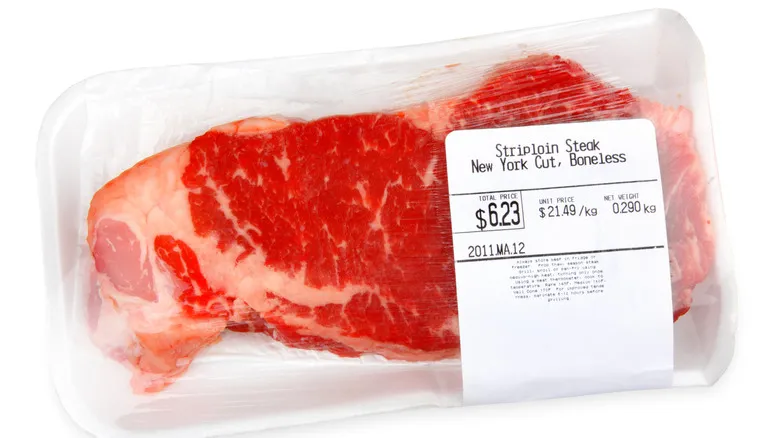
Cross-contamination is a genuine concern, so when storing meat in the refrigerator, it's crucial to ensure that the meat is kept at a sufficiently low temperature and that it doesn't leak juices from its packaging. If not, your refrigerator can become a breeding ground for various bacteria from the meat.
Start by reserving some space on the bottom shelf, just above the crisper. This area is typically one of the coldest spots in the refrigerator, helping to keep raw meats like chicken, ground beef, or steak fresh for a longer period.
Next, place the raw meat in plastic bins within the fridge. While you can keep it in its original absorbent packaging, that packaging often allows juices to escape, potentially contaminating your fruits and vegetables in the crisper. By using additional plastic containers with lids, you can prevent leaks into the crisper below and further minimize the risk of cross-contamination with other items in the fridge. This also helps contain any odors from the meat, reducing the chance of them affecting other foods. Lastly, maintain the meat at around 40°F to keep it chilled and extend its shelf life.
Keeping bread in the fridge
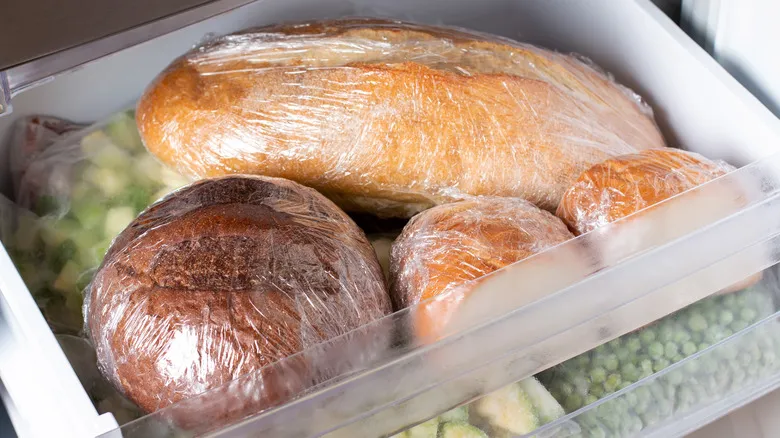
The deterioration of bread in the fridge is primarily influenced by chemistry and geometry. The flour contains starch granules that arrange themselves into specific geometric structures. When water is introduced, it disrupts this crystalline arrangement, leading to a loss of structure at the molecular level.
However, when the bread cools down again, the crystalline structure of the starch can reform. This cycle of breaking down and rebuilding occurs repeatedly, depending on the bread's exposure to cold temperatures. Storing bread in the fridge disrupts this process, causing it to become stale and dry out more quickly than if it were kept in a more suitable environment, such as a bread drawer or bread box.
Additionally, bakery bread tends to fare better in paper bags than in plastic ones. When bread is placed in plastic, it can trap moisture, leading to sweating. This moisture increases the risk of mold, especially if the bread is taken out of the fridge and left on top of it.
Leaving food uncovered
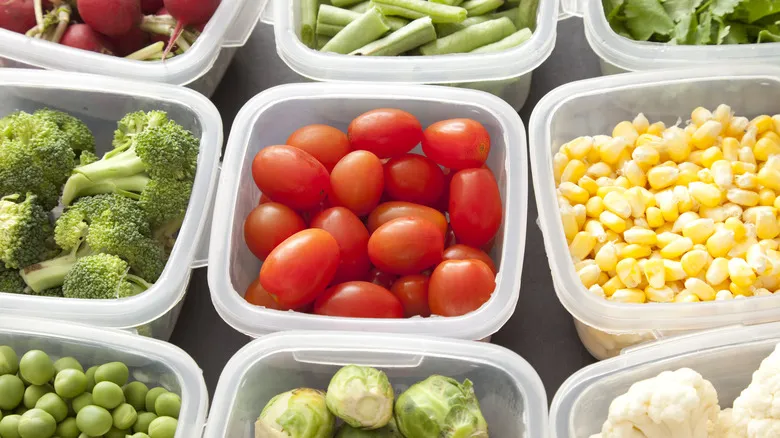
When you're feeling exhausted and just want to store leftovers after dinner, it can be tempting to toss them into the fridge without a lid. You might even earn some extra laziness points if you leave them in the pot you cooked them in. However, it's important to note that placing food in the fridge uncovered poses a significant risk of cross-contamination.
Here's why: Juices and drips from other food containers can fall into the uncovered food, introducing germs and bacteria to anything below that isn't covered. A little movement of the containers above can easily lead to contaminants mixing in with your food.
Additionally, if the flavors of the food can be affected by other items nearby, leaving food uncovered increases the chances that one dish will unintentionally absorb the taste of another due to the lack of a lid while stored in the fridge.
Choosing the wrong containers for food
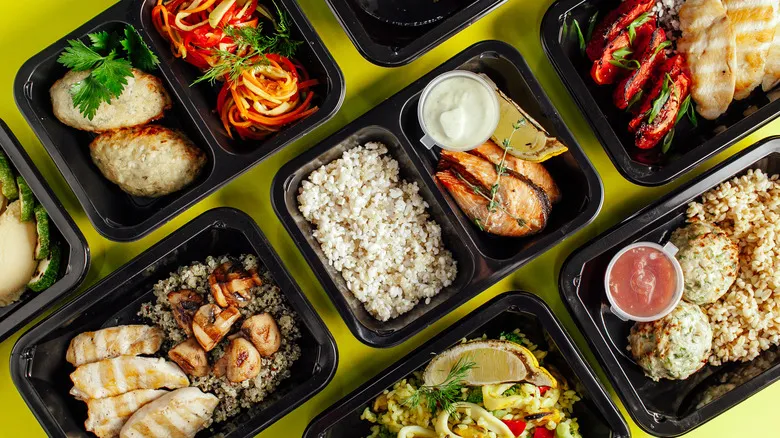
Who would have thought that Tupperware and its generic counterparts come with so many storage guidelines? Yet they do, and ignoring these often unspoken rules can lead to food becoming inedible for various reasons.
For instance, using an opaque container can increase the risk of food spoiling since you can't see what's inside, which may cause you to forget about it altogether. Another important point is that single-use containers, like water bottles, should only be used once. Many of these bottles can harbor bacteria after being consumed, making them unsafe to refill.
The same concept applies to storing food in food-grade containers before placing them in the fridge. These containers are less likely to contain harmful substances, such as plastic particles. Additionally, even high-quality containers like Tupperware can degrade over time, rendering them less safe or practical for use.
A simple solution to this issue is to use glass containers with lids for food storage. This way, you avoid using opaque plastic or plastic that may have begun to deteriorate, promoting healthier food storage practices.
Recommended
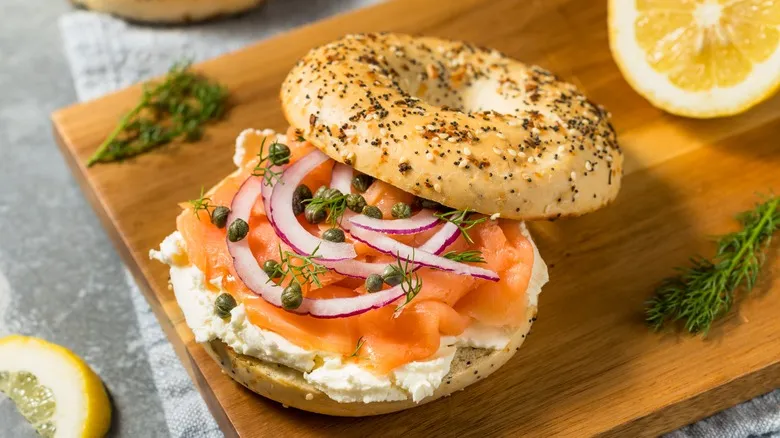
Turn Your Favorite Bagel Into A Savory Breakfast Casserole And Thank Us Later

Boxed Potato Flakes Are The Simple Hack For Super Crispy Fried Chicken

The Best And Worst Way To Clean Your Cast Iron Skillet
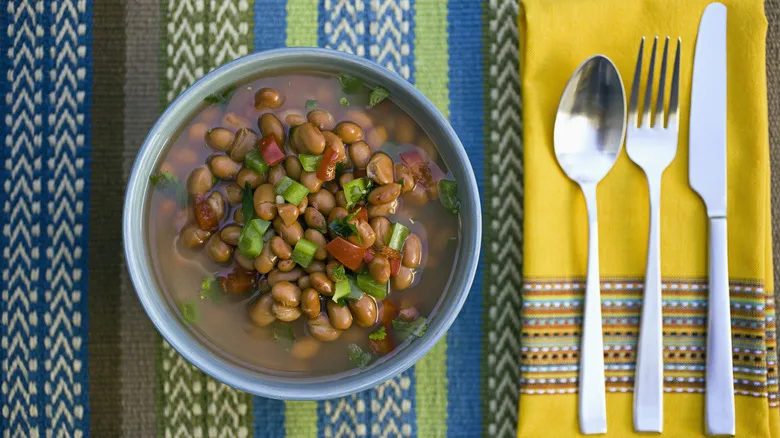
Why You Might Want To Add Baking Soda To Your Beans
Next up

